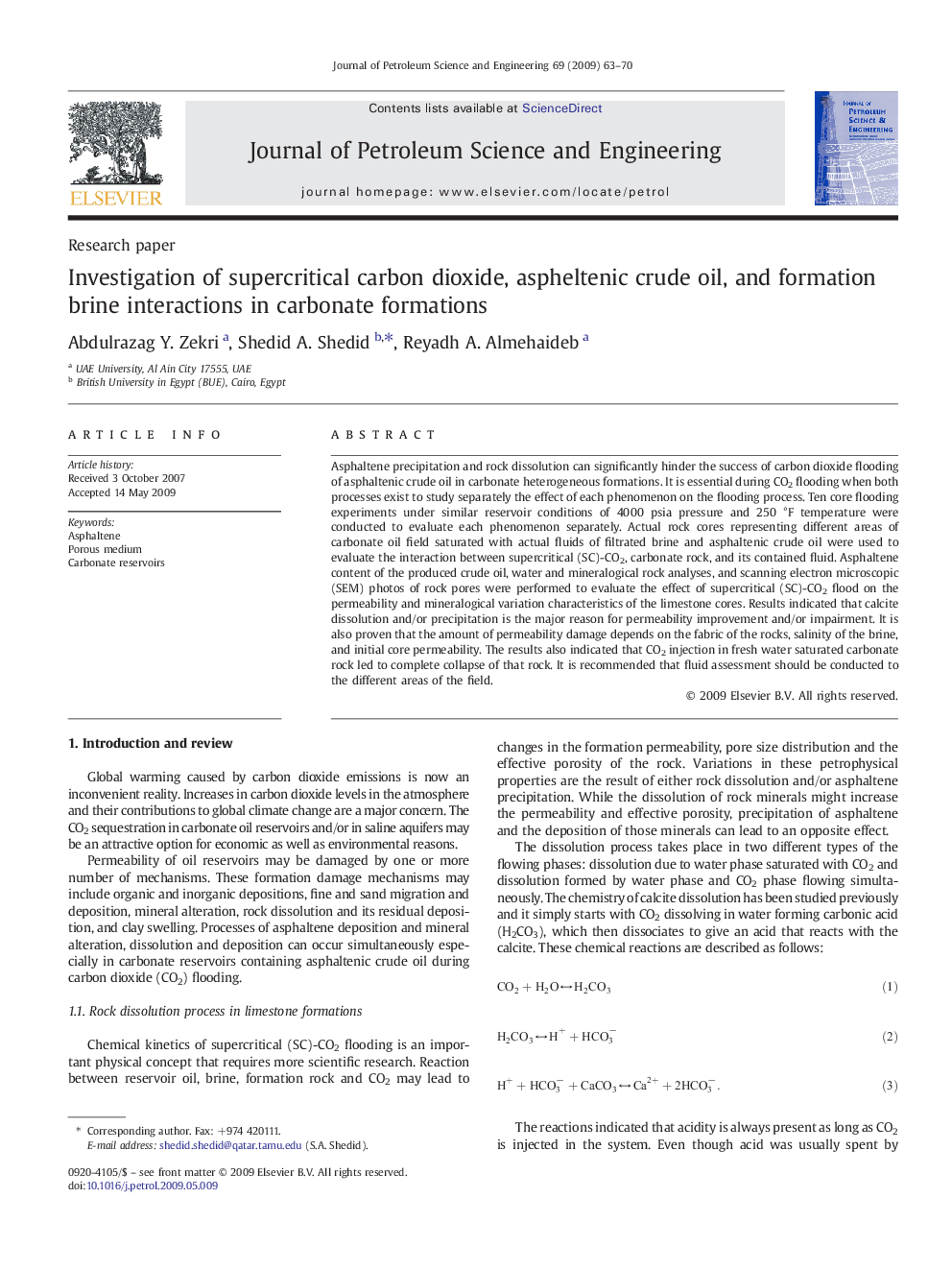| Article ID | Journal | Published Year | Pages | File Type |
|---|---|---|---|---|
| 1756091 | Journal of Petroleum Science and Engineering | 2009 | 8 Pages |
Asphaltene precipitation and rock dissolution can significantly hinder the success of carbon dioxide flooding of asphaltenic crude oil in carbonate heterogeneous formations. It is essential during CO2 flooding when both processes exist to study separately the effect of each phenomenon on the flooding process. Ten core flooding experiments under similar reservoir conditions of 4000 psia pressure and 250 °F temperature were conducted to evaluate each phenomenon separately. Actual rock cores representing different areas of carbonate oil field saturated with actual fluids of filtrated brine and asphaltenic crude oil were used to evaluate the interaction between supercritical (SC)-CO2, carbonate rock, and its contained fluid. Asphaltene content of the produced crude oil, water and mineralogical rock analyses, and scanning electron microscopic (SEM) photos of rock pores were performed to evaluate the effect of supercritical (SC)-CO2 flood on the permeability and mineralogical variation characteristics of the limestone cores. Results indicated that calcite dissolution and/or precipitation is the major reason for permeability improvement and/or impairment. It is also proven that the amount of permeability damage depends on the fabric of the rocks, salinity of the brine, and initial core permeability. The results also indicated that CO2 injection in fresh water saturated carbonate rock led to complete collapse of that rock. It is recommended that fluid assessment should be conducted to the different areas of the field.
